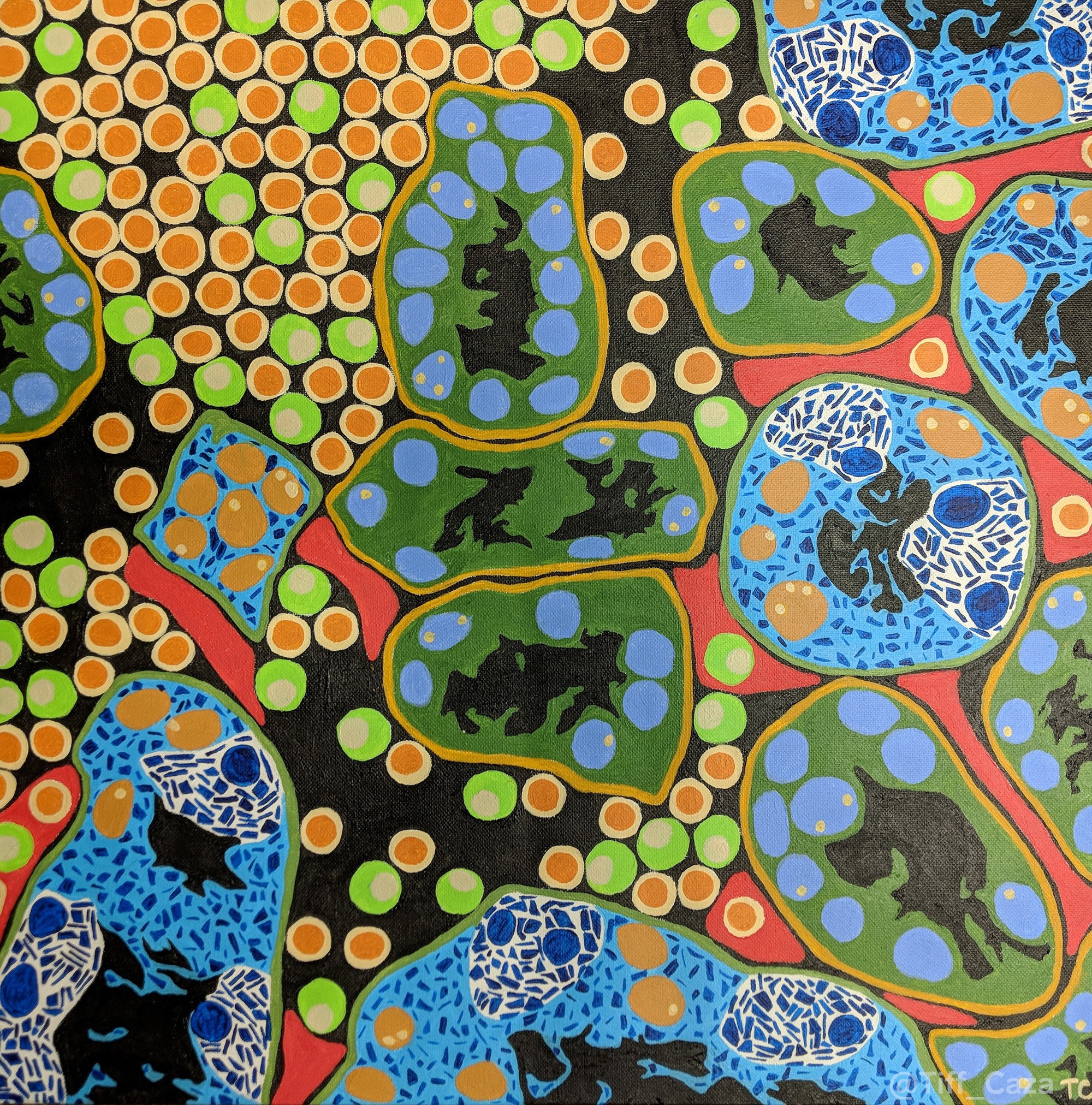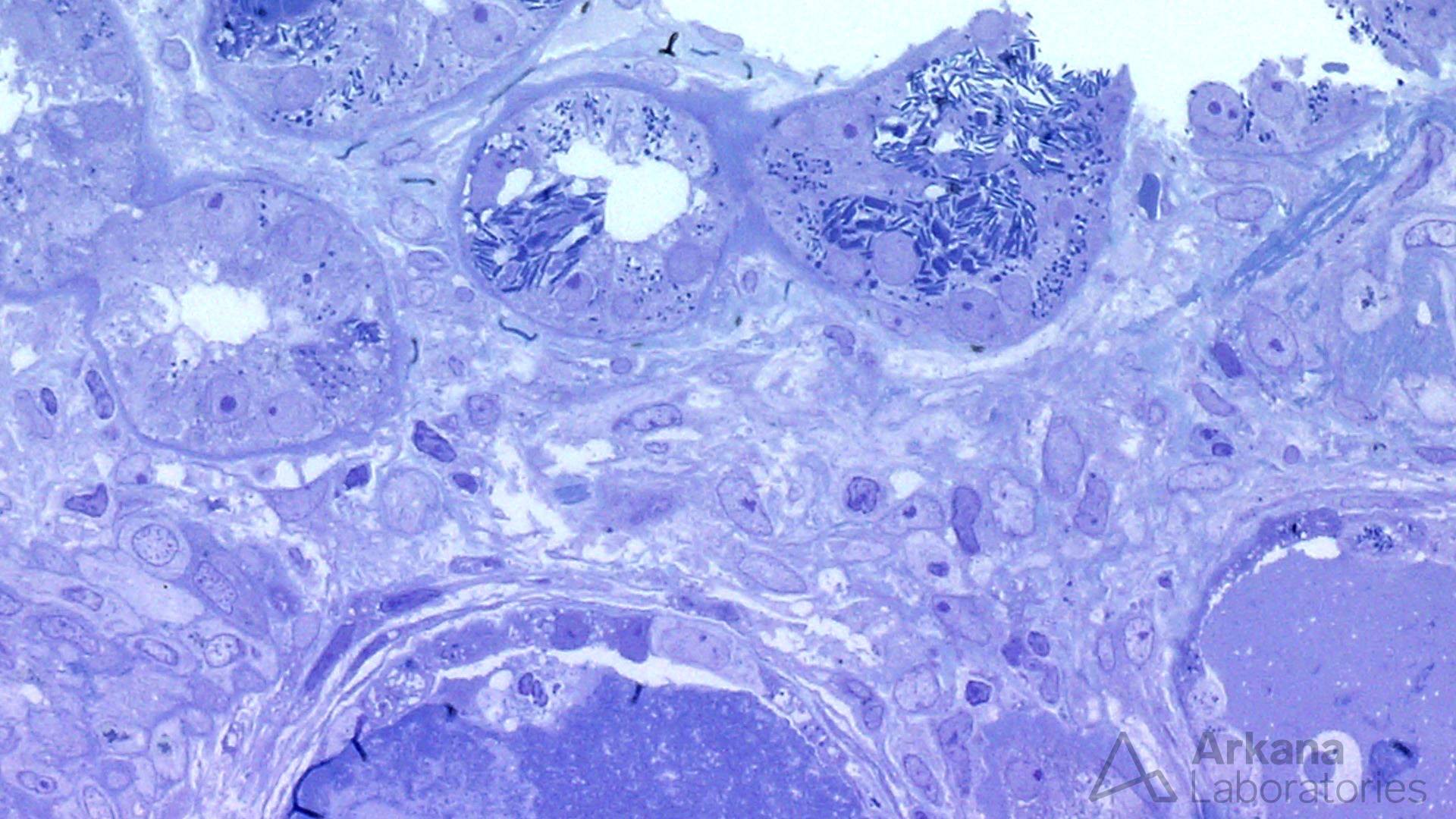
The painting above shows light chain proximal tubulopathy with crystals, which is one type of a monoclonal gammopathy of renal significance (MGRS). MGRS, as defined by the International Kidney and Monoclonal Gammopathy Research Group, is a “clonal proliferative disorder that produces a nephrotoxic monoclonal immunoglobulin” (Leung N et al, 2019), and indicates end-organ damage resulting from a monoclonal gammopathy. The most common MGRS manifestations include AL amyloidosis, monoclonal immunoglobulin deposition disease, light chain cast nephropathy, and light chain proximal tubulopathy. In light chain proximal tubulopathy, a nephrotoxic monoclonal light chain induces acute tubular injury or proximal tubular dysfunction. Proximal tubular dysfunction can manifest as Fanconi’s syndrome, resulting from a defect in proximal tubular reabsorption. This leads to loss of phosphate, amino acids, glucose, and bicarbonate in the urine that can be detected by clinical chemistry assays.
Light chain proximal tubulopathy can be seen with or without crystal formation, and when presented without crystals has been shown to be approximately three times more common than with crystals (Larsen et al, 2011). Crystals represent precipitated light chains (as shown in the photomicrograph below) and are more likely to be negative on standard immunofluorescence than in cases without crystals. Paraffin immunofluorescence following pronase digestion for antigen retrieval can unmask precipitated monoclonal light chains in negative cases. In a case series, a majority of patients with this diagnosis had evidence of a lymphoproliferative disorder or plasma cell dyscrasia on follow up (Larsen et al, 2011). This diagnosis, being a monoclonal gammopathy of renal significance, should lead to clinical and laboratory workup to exclude hematologic malignancy.

Toluidine blue stained thick section showing light chain crystals within the cytoplasm of proximal tubules in a case of light chain proximal tubulopathy.
References:
Larsen CP, Bell JM, Harris AA, Messias NC, Wang YH, Walker PD. The morphologic spectrum and clinical significance of light chain proximal tubulopathy with and without crystal formation. Modern Pathology 2011 Nov; 24 (11): 1462-1469.
Leung N, Bridoux F, Batuman V, Chaidos A, Cockwell P, D’Agati VD, Dispenzieri A, Fervenza FC, Fermand J-P, Gibbs S, Gillmore JD, Herrera GA, Jaccard A, Jevremovic D, Kastritis E, Kukreti V, Kyle RA, Lachmann HJ, Larsen CP, Ludwig H, Markowitz GS, Merlini G, Mollee P, Picken MM, Rajkumar VS, Royal V, Sanders PW, Sethi S, Venner CP, Voorhees PM, Wechalekar AD, Weiss BM, Nasr SH. The evaluation of monoclonal gammopathy of renal significance: a consensus report of the International Kidney and Monoclonal Gammopathy Research Group. Nature Reviews Nephrology 2019; 15: 45-59.
Quick note: This post is to be used for informational purposes only and does not constitute medical or health advice. Each person should consult their own doctor with respect to matters referenced. Arkana Laboratories assumes no liability for actions taken in reliance upon the information contained herein.

